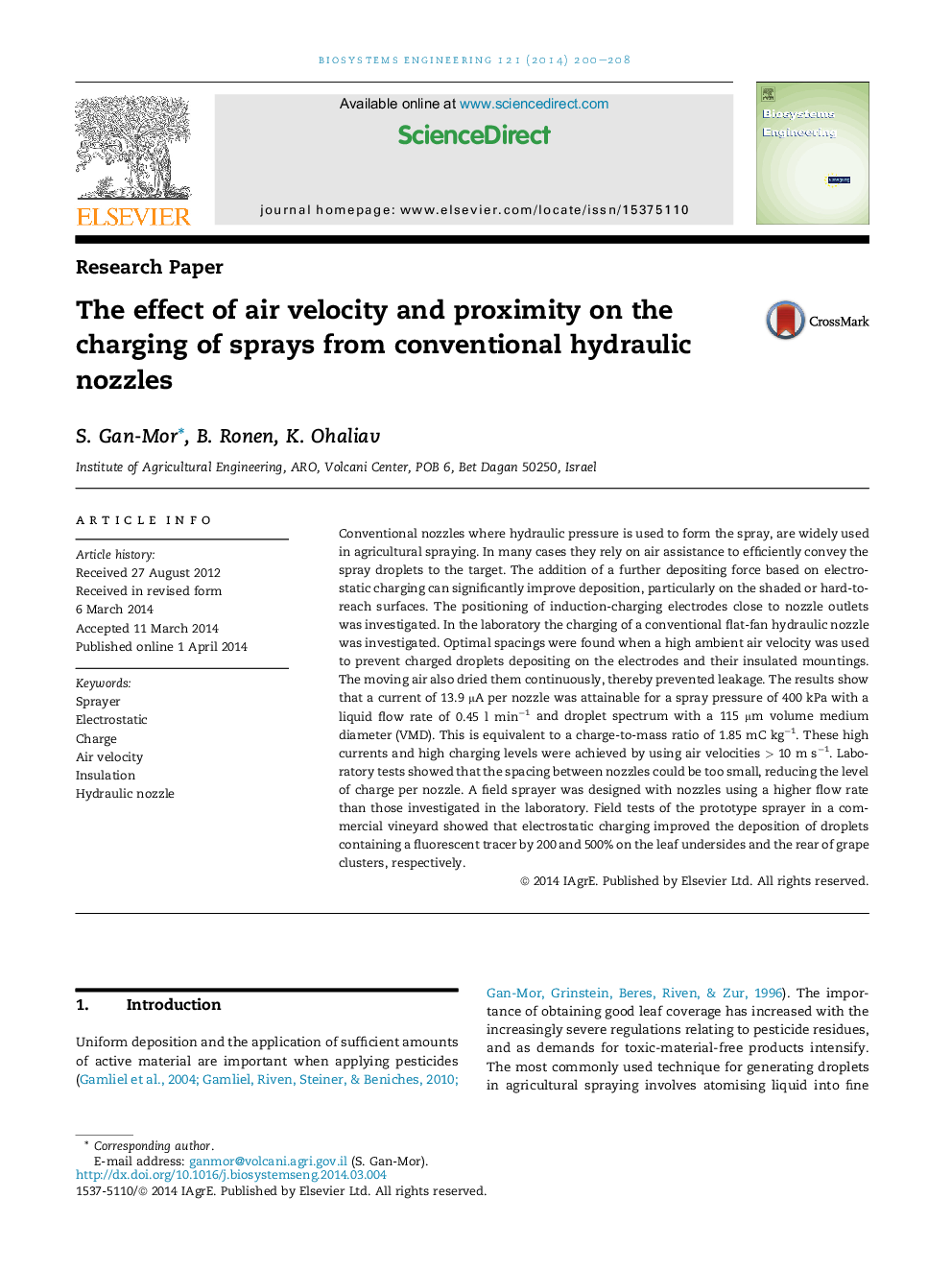| Article ID | Journal | Published Year | Pages | File Type |
|---|---|---|---|---|
| 8055233 | Biosystems Engineering | 2014 | 9 Pages |
Abstract
Conventional nozzles where hydraulic pressure is used to form the spray, are widely used in agricultural spraying. In many cases they rely on air assistance to efficiently convey the spray droplets to the target. The addition of a further depositing force based on electrostatic charging can significantly improve deposition, particularly on the shaded or hard-to-reach surfaces. The positioning of induction-charging electrodes close to nozzle outlets was investigated. In the laboratory the charging of a conventional flat-fan hydraulic nozzle was investigated. Optimal spacings were found when a high ambient air velocity was used to prevent charged droplets depositing on the electrodes and their insulated mountings. The moving air also dried them continuously, thereby prevented leakage. The results show that a current of 13.9 μA per nozzle was attainable for a spray pressure of 400 kPa with a liquid flow rate of 0.45 l minâ1 and droplet spectrum with a 115 μm volume medium diameter (VMD). This is equivalent to a charge-to-mass ratio of 1.85 mC kgâ1. These high currents and high charging levels were achieved by using air velocities > 10 m sâ1. Laboratory tests showed that the spacing between nozzles could be too small, reducing the level of charge per nozzle. A field sprayer was designed with nozzles using a higher flow rate than those investigated in the laboratory. Field tests of the prototype sprayer in a commercial vineyard showed that electrostatic charging improved the deposition of droplets containing a fluorescent tracer by 200 and 500% on the leaf undersides and the rear of grape clusters, respectively.
Related Topics
Physical Sciences and Engineering
Engineering
Control and Systems Engineering
Authors
S. Gan-Mor, B. Ronen, K. Ohaliav,
